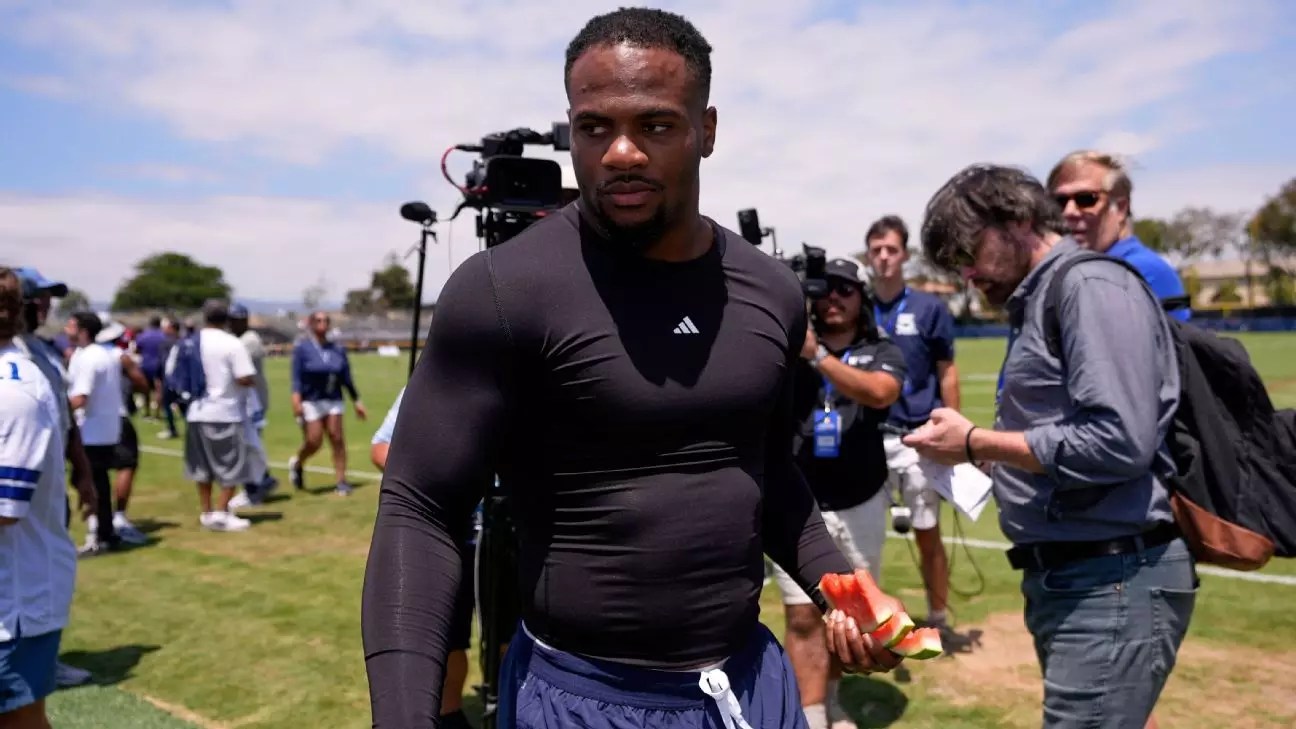In the world of professional football, talent alone is rarely enough to guarantee success. The Dallas Cowboys’ ongoing contract saga with Micah Parsons exemplifies the intricate balance between player loyalty, management expectations, and strategic planning. Despite Parsons’ undeniable prowess on the field, the front office’s inability to secure a timely extension casts doubt not only over Parsons’ immediate future but also over the team’s long-term defensive stability. It is a stark reminder that in the NFL, promise on paper must be matched by concrete commitment off the field. As the season approaches, the uncertainty surrounding Parsons’s contractual status threatens to cloud what should be a period of focused preparation.
The Cowboys’ stance appears optimistic, but beneath this veneer lies an unsettling reality: their star pass rusher remains unsigned beyond the rookie deal. The prolonged silence from negotiations and the absence of any substantive dialogue since March highlight a disconnect that could prove costly. If the team cannot bridge this gap, they risk losing the disruptor they have come to rely on in passing situations, which directly impacts their capacity to compete at the highest level. The team’s confidence seems somewhat naive, considering Parsons’ significance and the potential fragility of his health given his current back injury. It’s a gamble—a high-stakes chess game where every move could either bolster their defense or leave them exposed.
The Myth of Readiness Amidst Limbo
A common misconception in high-stakes sports is that star athletes can simply “will” themselves into shape regardless of circumstances. The Cowboys coach Brian Schottenheimer appears to believe in Parsons’s resilience, asserting confidence that Parsons will be fit for the season opener against the Philadelphia Eagles. While this optimism may seem reassuring, it borders on dangerous hubris. The fact that Parsons hasn’t participated in full practices—only walkthroughs and meetings—raises legitimate concerns about his physical readiness. Relying solely on his body’s intuition and self-awareness is superficially comforting but dangerously incomplete. Physical readiness is built through consistent practice, repetition, and stress, none of which Parsons has been able to fully engage in.
The issue extends beyond mere fitness; it exposes an inherent vulnerability: the risk of injury, especially soft-tissue injuries that are less predictable when a player is deprived of on-field repetitions. Defensive ends like Parsons thrive on change of direction and explosive movements—elements that cannot be fully simulated without real practice. Coaches and trainers can prepare him, but cannot entirely compensate for the missed game-time or the untested nature of his physical state once play resumes at full tilt. The team’s reliance on Parsons’s innate talent, while understandable, often becomes a double-edged sword when injury risk is heightened by incomplete conditioning.
The Fragile Balance of Tactical Planning
Another layer to this complex puzzle lies in roster management and strategic flexibility. The Cowboys’ decision to retain an extra pass rusher if Parsons remains limited signals a commitment to defensive potency, but it also underscores a broader vulnerability: the team’s short-term planning hinges heavily on the health of a single player. Every decision, from practice routines to the final cutdown, is now intertwined with Parsons’s unpredictable availability.
This contingent approach reveals a deeper issue within the franchise’s strategic depth. Relying heavily on Parsons’s skill set and assuming his immediate availability is reckless, especially considering the high stakes of a season opener against a divisional rival. The team’s coaching staff must prepare for scenarios where Parsons sees limited or no action, which forces them to reconfigure their defensive strategies hastily. Such instability undermines the foundational consistency that a successful defense requires and exposes the Cowboys to unintended vulnerabilities.
Moreover, the protracted negotiations and apparent lack of urgency reveal a broader theme: the tension between player valuation and organizational priorities. While Parsons is undoubtedly a game-changing talent, his current unresolved contract situation hints at a disconnect that could foster lingering discord and distraction, both of which are detrimental to team cohesion. As the season looms, the franchise must confront whether their focus is purely on immediate tactical configurations or if they are willing to negotiate in good faith to secure their star’s future, thereby solidifying both their roster and their psychological stability.

